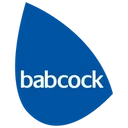Babcock Adopts SharePoint Using harmon.ie


Industry
Engineering & Manufacturing
Location
Global multinational
Company Size
35K+ employees
About Babcock
Babcock is a leading provider of critical, complex engineering services. It employs over 35,000 associates worldwide, with 2020 operating profit of ₤524M. Founded in 1891, Babcock now focuses on three highly regulated markets – defense, emergency services and civil nuclear – delivering vital services and managing complex assets in the UK and internationally.
The SharePoint Adoption Challenge
Over its 130 years of activity, Babcock acquired multiple organizations; as a result, IT operations became quite fragmented. Babcock decided to centralize its IT department and selected SharePoint on-premises as their document management system. Prior to SharePoint, documents were stored on shared drives without classification or metadata, as well as on other disparate document management systems. Managing permissions in this arrangement was impossible; a unified document management system was needed.
Babcock now has approximately 26,000 SharePoint users, and 40 terabytes of data is stored on SharePoint. Janet Robertson, Digital Workplace Analyst at Babcock International, says “SharePoint is used throughout the business and the organization, but we all know that not everybody gets the most out of these tools, so part of our remit is to encourage them to use all the tools that we've got.”
The Data Classification Challenge
One of Babcock’s big customers is the British Ministry of Defense. For this client, all documents stored on SharePoint must be classified with government / non-government classification.
The process of classification was very difficult for employees, especially for bulk uploading of documents and email. “A lot of our customers like to do bulk upload of content”, says Cassy Freeman, Digital Workplace Lead at Babcock. “They use this excellent drag-and-drop functionality in SharePoint, take staff from their Windows Explorer and drop it into SharePoint, and then when they try to check it in, they get this awful message. They were already scared of using SharePoint anyway, now [they are] even more petrified. They don't realize that it's not checked in at all.”
Robertson adds “Lots of users contact us to say ‘I can't see these files’ and nine times out of ten, the files are checked out, so they just need to be classified and checked in.”
The Solution - harmon.ie
As part of the shift to SharePoint, harmon.ie was selected to drive SharePoint adoption and to alleviate the classification challenges; Freeman explains why: “One of the challenges we had was that when we were taking multiple document management systems and bringing them into one, some of the older systems had functionality that we couldn't give to them out-of-the-box with SharePoint, and that's how harmon.ie became part of our journey. The reason we chose harmon.ie is it bridged the gap that we had for storing emails in SharePoint. harmon.ie offered a good price and were able to do a turn-around in the timescales that we required.”
Implementation and Training
harmon.ie is part of a service catalog of all available tools that Babcock suggests to their employees, and anyone can download it. The IT team is running a tour of all the offices of Babcock in the UK, teaching the users about their available tools. “Every single tour we do features harmon.ie, because it does make working with documents and SharePoint so much easier”, says Freeman, “and we actually have statistical evidence that once people see harmon.ie, they want it.”
The Results
Freeman talks about the advantages of using harmon.ie in Babcock:
Bulk uploads and classification – harmon.ie solves the difficulties of bulk uploading documents and emails, and classifying all items at once. “The experience in harmon.ie is much different [than in SharePoint]. First of all, users are within Outlook, a tool that they're already familiar with. They can drag documents and emails from Outlook or Windows Explorer into the harmon.ie sidebar. harmon.ie gives us the ability to add mandatory and optional metadata for all uploaded content at once. Once I've filled-in the properties, I’m prompted to check it in as a minor or a major version, I'm able to add version comments, I can start content approval, and I can also respond to it directly from Outlook.”
Sending links instead of email attachments - a side benefit of the SharePoint solution is that Babcock sees a reduction in documents sent as email attachments. This not only decreases data volume, it also prevents document versioning chaos. “I'm sure that you've all been there where you work on a document, you've saved it locally, you email it as an attachment, the recipient saves it to their desktop, they work on it, they send it back. We've now got four versions of the exact same document and we've got no idea which one is the latest. Sending the document through harmon.ie, it replaces it with a hyperlink and you know that you're always looking at that single version in SharePoint. harmon.ie prompts us if we do forget that we shouldn't send an attachment, to replace the attachment with a link and then stores it in SharePoint.”
Simple interface to SharePoint – harmon.ie simplifies the interaction with SharePoint: “You can search for SharePoint content through the harmon.ie Outlook add-on and you can open and modify documents directly through Outlook. So basically, you can just avoid using SharePoint in its entirety which works really well for people who find it hard to work with SharePoint.”
“A great cool thing is any sites that you follow on the SharePoint farm will automatically be added to your sites in harmon.ie, so your users don't need to worry about being able to configure a link in their harmon.ie add-on to the SharePoint site.”
Robertson adds: “harmon.ie gives you that window into SharePoint right from Outlook. With harmon.ie, finding the SharePoint site that I need, finding the document library I need, it’s very quick, it's very responsive, and it's straight there in Outlook. You don't have to open up another browser window, it's there all the time, so that saves me a lot of time. All the SharePoint views work in harmon.ie, the content types, the approvals, you can define favorites, so it is a really good tool.”
The Future
Babcock continues to demonstrate the capabilities of harmon.ie to the new business users, to help them adopt SharePoint and classify documents. As Babcock moves part of its Microsoft operations to the cloud, they plan to move to a hybrid approach and to integrate with Microsoft Teams.
Bring Everything Together in SharePoint, Microsoft Teams, and OneDrive
Unify your content – emails, documents, and conversations – drag and drop Outlook emails and attachments into SharePoint, Teams, and OneDrive.
